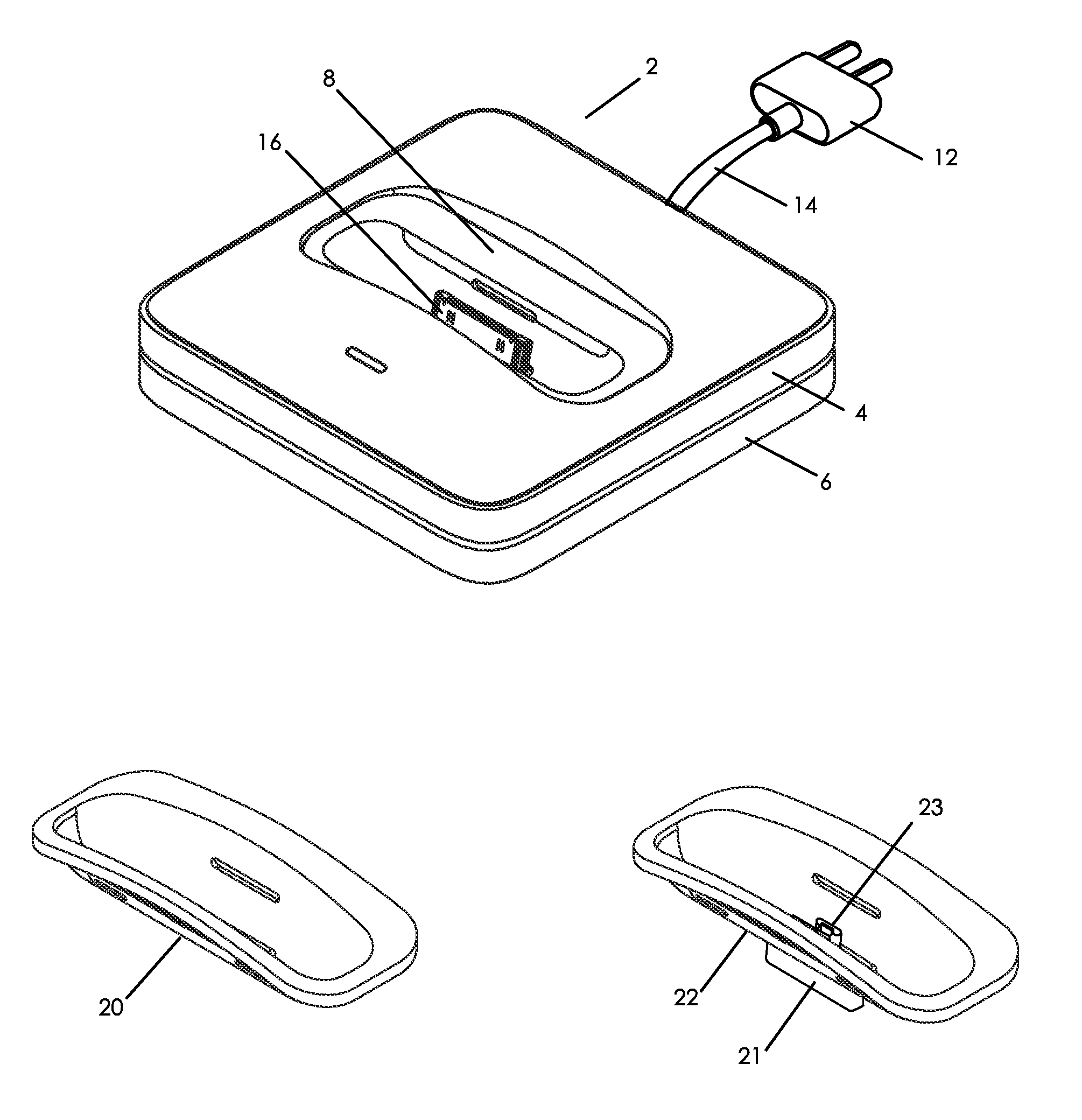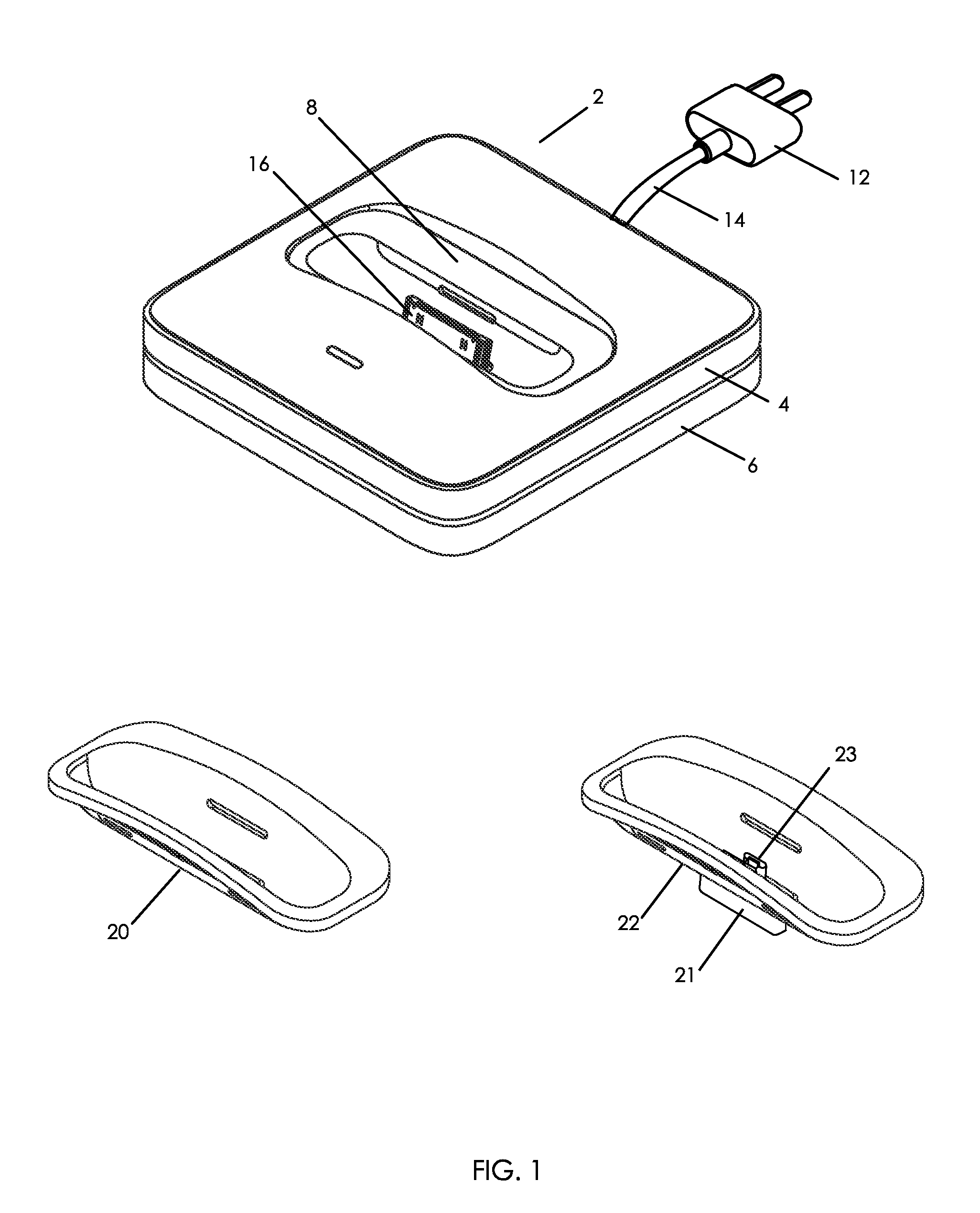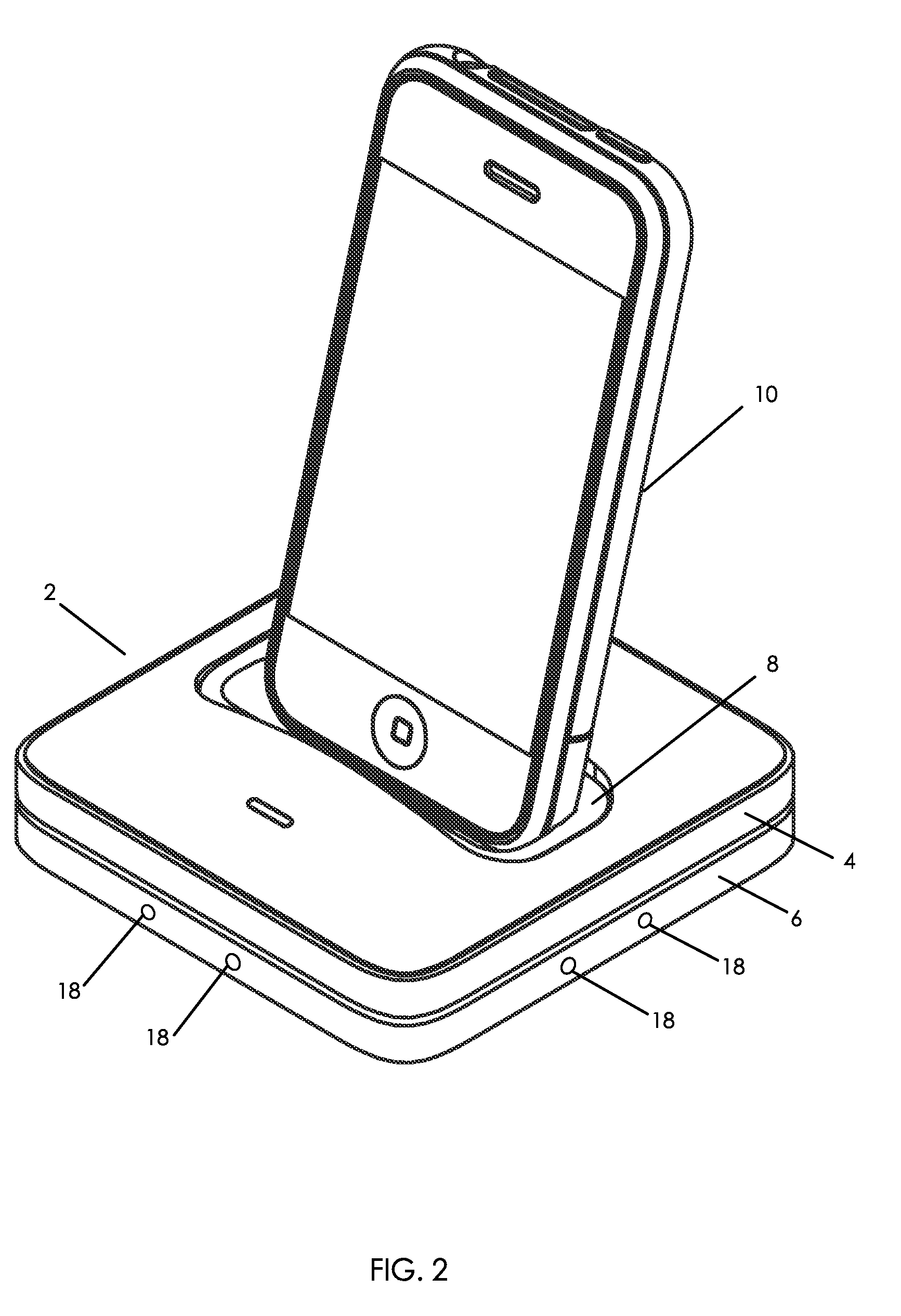Modular power supply
a power supply and module technology, applied in the field of modules, can solve the problems of many obstacles in the marketing and selling of power supplies, and the inability to use high-quality durable components in chargers,
- Summary
- Abstract
- Description
- Claims
- Application Information
AI Technical Summary
Benefits of technology
Problems solved by technology
Method used
Image
Examples
Embodiment Construction
[0014]An illustration of a charging module 2 for a modular charger constructed in accordance with an embodiment of the present invention having electrified rails 4 and 6 is shown is FIG. 1. The charging module 2 is a square that has electrified rails 4 and 6 around its periphery. The rails 4 and 6 are adapted to receive and supply a DC bus voltage. The rails 4 and 6 are used to electrically connect adjacent modules. A DC bus voltage of 24 volts is preferably used so that a user can not seriously shock or harm them self by contacting the rails 4 and 6. A docking station 8 is provided on the module 2 that is adapted to receive an electronic device 10 as shown in FIG. 2. The docking station 8 has a connector 16 that is adapted to physically and electrically connect the portable electronic device 10 to the to the main body portion 2.
[0015]The main body portion of the charging module 2 receives power from an external power supply connector 12 such as household plug 12 and cable 14. An AC...
PUM
 Login to View More
Login to View More Abstract
Description
Claims
Application Information
 Login to View More
Login to View More - R&D
- Intellectual Property
- Life Sciences
- Materials
- Tech Scout
- Unparalleled Data Quality
- Higher Quality Content
- 60% Fewer Hallucinations
Browse by: Latest US Patents, China's latest patents, Technical Efficacy Thesaurus, Application Domain, Technology Topic, Popular Technical Reports.
© 2025 PatSnap. All rights reserved.Legal|Privacy policy|Modern Slavery Act Transparency Statement|Sitemap|About US| Contact US: help@patsnap.com



